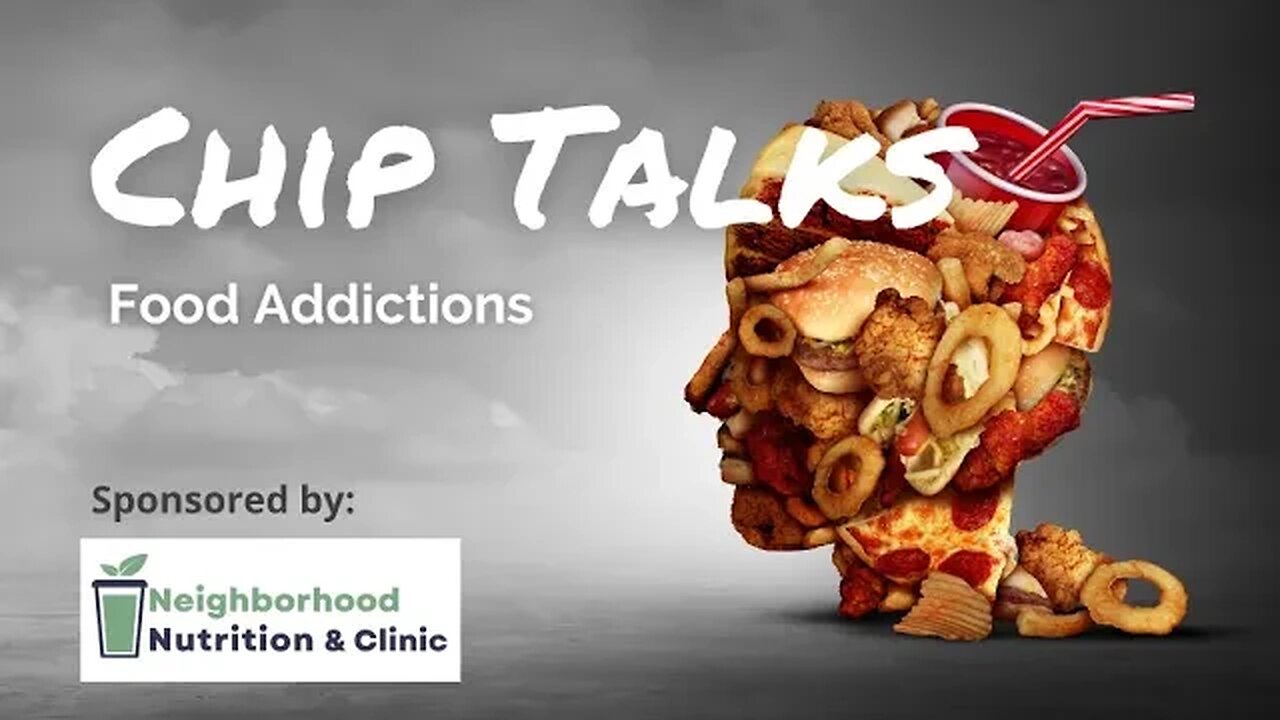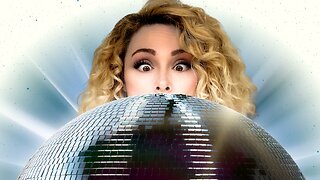Premium Only Content

Chip Talks: Food Addiction
chip talks - food addiction
No one will like this blog much, but I would encourage you to: read it; and understand it.
We all have to eat don’t we? How much do we really understand about “eating”?
First…what do we need to eat? Like, what do we HAVE TO HAVE? It turns out not much, unless you listen to the USDA and follow the old food pyramids. Nope, won’t even comment on those. We will be positive and forward looking!
You HAVE TO HAVE dietary fats. Not McDonalds fats. You need all the fats you can stick on a triglyceride. Just the fact that we can eat them and they stick right on our storage mechanism, called a triglyceride, should tell us of their importance. These fats are saturated fat, mono-unsaturated fats, and poly-unsaturated fats. It is important that we eat these fats in the proper ratio’s. About 80% to 85% of our fat intake should be a combination of saturated and mono-unsatured fats with a preference of mono-unsaturated. Research is indicating that a ratio of 1:1 up to 1:4 of omega 3 to omega 6 fatty acids is preferred.
Our bodies REACT to the intake of dietary fats. If we are getting enough and in the right ratios as described above, we really do not need much else. Not even water. For proof, ask any bear.
So what happens if we do not get the fats right? Well, then we develop a gut microbiome. We have all heard about the biome and the bacteria that we allow to grow inside of us. But what is its purpose? Turns out it is to offset the fats we are not getting in our diets. Bacteria can produce proteins which our bodies use in place of the proteins we would have built from dietary fats.
Our gut biome can house useful or harmful bacteria. It is loosely managed by the endocannabinoid system and metabolic processes. Useful bacteria like to eat FIBER. Harmful or pathogenic bacteria like to eat GLUCOSE or DIETARY SUGARS.
How important is it that we understand the above? “Google what is the cause of disease? “Pathogens””…”Google, where do pathogens come from? “Dysregulated bacteria””. The cause of (most) disease is bacterial pathogens.
So…can the bacteria influence you? Can the “bad” bacteria compel you to eat certain things? It turns out yes, and this happens way way more than we realize. Bacteria are capable of producing brain neurochemicals. They can increase or decrease pleasure centers by using dopamine and serotonin which they can excrete.
You can begin to identify how much this is happening to you in the following way. When our bodies need nutrients or we are signalling that we need nutrients, we release a hormone called ghrelin. Gherlin is what makes you feel hungry and what makes our tummies rumble. It actually causes minor stomach cramps which signal us it is time to eat. This is COMPLETELY DIFFERENT than a “craving” for food. For instance that cookie right before bed. That is a mental craving rather than a physical need. Yep, you guessed it, the craving is BACTERIAL. The bacteria need to eat and they can cause you to “crave”.
Here is where we get weird. “Craving” is a very well known and understood word in addiction. Addicts “crave”. Addicts obsess over their drug of choice. They look forward to their next fix. They live fix to fix. Do you look forward to your next meal? Your next desert? That milk shake? Do you obsess? If you are honest with yourself you will answer like the rest of us and that is “yes Chip I crave food…”.
We have all unknowingly put ourselves in this situation. While the information exists, it seems to be ignored by the medical community and our media. There is nothing in this blog you cannot easily verify for yourselves. So here are some facts to empower you as we explore this possibility that we are all addicted to our food…
a human can go a long time without eating. A bear can live for up to 5 months with no water or food, although a bear “models” their fat to be able to do this. Humans can easily go several weeks without any food
humans appear to be designed to eat one meal a day or one meal every several days
humans work better when we have a less diverse diet
we need dietary fats in the right ratio, some fiber, a few cofactors, and some chlorophyll…that is it
dietary sugars feed bad bacteria which increase cravings
begin to understand the difference between a “craving” and a “need”
There are certainly supplements, strategies, and diets that can help. Please contact us if you are needing additional information.
Check out my healthy Gut products: https://truemedx.com/product-category/gut/
-
 12:05
12:05
Vania Fernandes
4 days agoMy empty Dubai apartment tour
65.1K21 -
 46:03
46:03
SouthernbelleReacts
3 days ago $5.09 earnedShutter Island Reaction | I Did NOT See That Ending Coming! | SouthernBelle Reacts
16.3K2 -
 6:39
6:39
nospeedlimitgermany
1 day ago $2.61 earnedBMW M3 E46 | 343 PS | Top Speed Drive German Autobahn No Speed Limit POV
13.4K7 -
 11:41
11:41
Sideserf Cake Studio
21 hours ago $2.73 earnedI Made A Disco Ball Cake!
24.6K6 -
 4:58:51
4:58:51
Steven Crowder
15 hours agoLIVE: No Kings Day - Following The Money w/ Guest: Data Republican | Louder with Crowder
810K434 -
 1:11:45
1:11:45
Man in America
13 hours ago🚨 America Descends Into CHAOS—Are You Prepared?
76.5K62 -
 2:23:54
2:23:54
Badlands Media
1 day agoDevolution Power Hour Ep. 363: Lawfare, Psyops, and the Great Narrative Reversal
98.1K25 -
 2:32:48
2:32:48
Tundra Tactical
8 hours ago $9.66 earnedSilencers, Senators, and Survival: Roasting Lies and a Security Breakdown of The MN Shooting
60.7K7 -
 10:45:48
10:45:48
Spartan
12 hours agoPro Halo Player | !politics Halo Infinite Ranked Arena into SWTOR and/or Gears Beta
67.5K3 -
 40:25
40:25
The Connect: With Johnny Mitchell
1 day ago $10.65 earnedBlackwater CEO Erik Prince Gets HONEST About The Israeli Invasion Of Lebanon
52.5K54